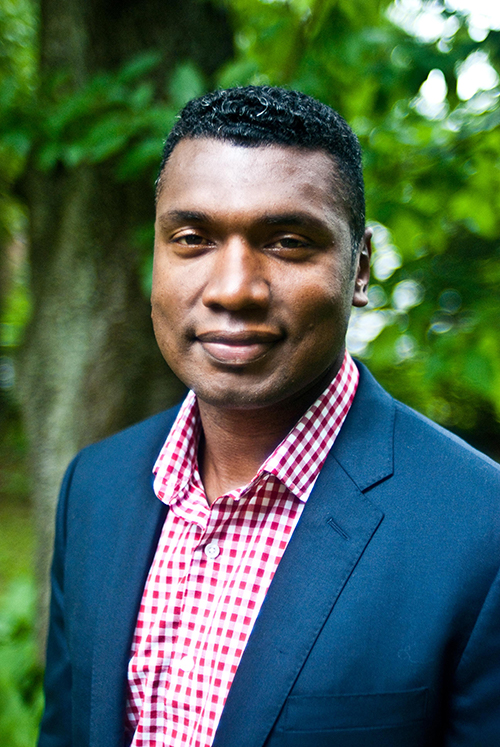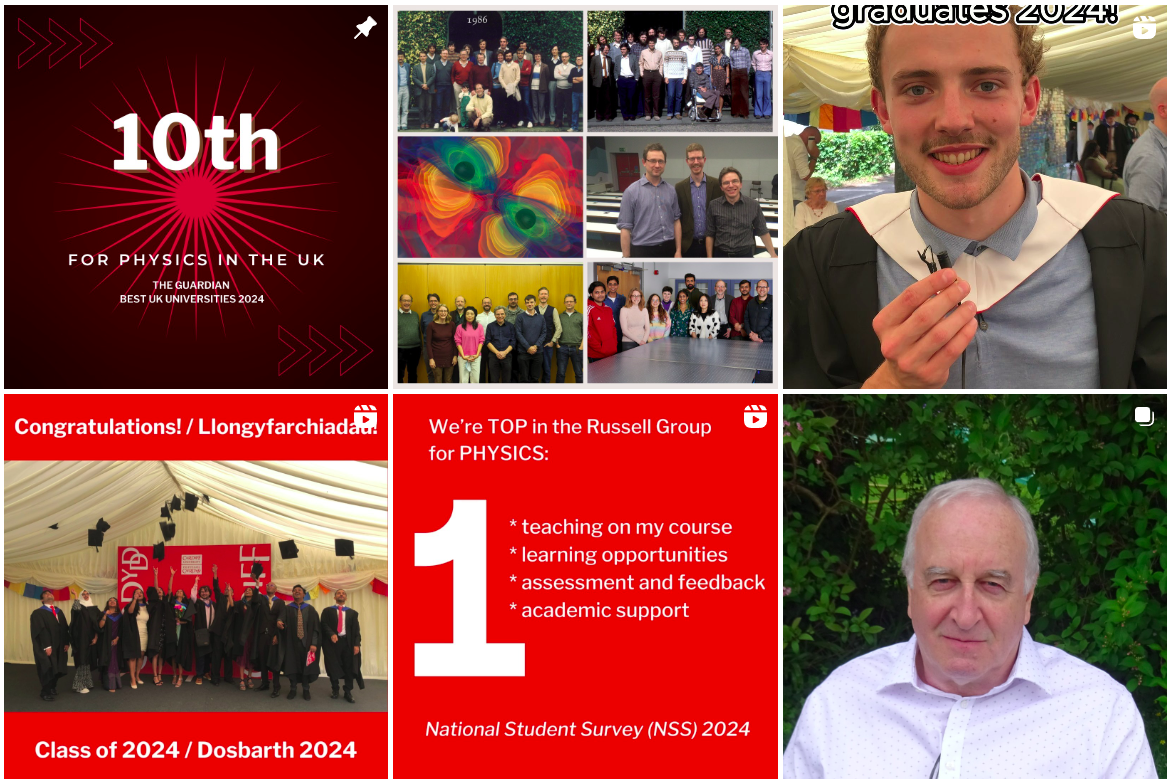Black scientists showcase
25 October 2022October is the black history month in the UK. As such, as for the last year, it is our pleasure to introduce you to a few among the hundreds of black scientists who are currently shaping (or shaped) our world and pushing forward the research in our field.
DiSTEM presents physicists, astronomers or researchers with a strong link to Cardiff University’s School of Physics & Astronomy’s main research areas.
We hope to bring some inspiration by reading their stories and showcasing their research!
CHANDA PRESCOD-WEINSTEIN
 Chanda Prescod-Weinstein is an assistant professor of physics and astronomy and core faculty in women’s and gender studies at the University of New Hampshire. Her research topics are cosmology and theoretical physics, including the axion as a dark matter candidate, inflation, and classical and quantum fields in the early universe. Nature recognized her as one of 10 people who shaped science in 2020. She also received the 2021 Edward A. Bouchet Award from the American Physical Society in recognition for her contributions to theoretical cosmology and particle physics. She is also the author of the book ‘The Disordered Cosmos: A Journey into Dark Matter, Spacetime, and Dreams Deferred’ which was selected as a finalist in several science book prizes.
Chanda Prescod-Weinstein is an assistant professor of physics and astronomy and core faculty in women’s and gender studies at the University of New Hampshire. Her research topics are cosmology and theoretical physics, including the axion as a dark matter candidate, inflation, and classical and quantum fields in the early universe. Nature recognized her as one of 10 people who shaped science in 2020. She also received the 2021 Edward A. Bouchet Award from the American Physical Society in recognition for her contributions to theoretical cosmology and particle physics. She is also the author of the book ‘The Disordered Cosmos: A Journey into Dark Matter, Spacetime, and Dreams Deferred’ which was selected as a finalist in several science book prizes.
WILLIAM RATCLIFF
 William Ratcliff is a physicist at the National Institute of Standards and Technology (NIST). He is a two-time recipient of a Department of Commerce Bronze medal (the highest recognition awarded by NIST). In 2019 he was awarded the title of Fellow of the American Physical Society (APS), which recognizes members who have made exceptional contributions to the physics enterprise in physics research and important applications of physics.
William Ratcliff is a physicist at the National Institute of Standards and Technology (NIST). He is a two-time recipient of a Department of Commerce Bronze medal (the highest recognition awarded by NIST). In 2019 he was awarded the title of Fellow of the American Physical Society (APS), which recognizes members who have made exceptional contributions to the physics enterprise in physics research and important applications of physics.
ERNEST WILKINS JUNIOR
 Ernest Wilkins Jr. was a prominent African American physicist and mathematician who worked at the University of Chicago Met Lab during the Manhattan Project. He obtained his PhD at the age of 19. Working in collaboration with Arthur Compton and Enrico Fermi, Wilkins researched methods for producing fissionable nuclear materials, focusing in particular on plutonium-239. Wilkins collaborated with Wigner on research in neutron absorption, leading to their discovery of the Wigner-Wilkins approach for estimating the distribution of neutron energies within nuclear reactors. He passed away at the age in 2011.
Ernest Wilkins Jr. was a prominent African American physicist and mathematician who worked at the University of Chicago Met Lab during the Manhattan Project. He obtained his PhD at the age of 19. Working in collaboration with Arthur Compton and Enrico Fermi, Wilkins researched methods for producing fissionable nuclear materials, focusing in particular on plutonium-239. Wilkins collaborated with Wigner on research in neutron absorption, leading to their discovery of the Wigner-Wilkins approach for estimating the distribution of neutron energies within nuclear reactors. He passed away at the age in 2011.
WILLIE HOBBS MOORE
 In 1972, Willie Hobbs Moore was the first African American woman to earn a PhD in Physics, almost 100 years after Edward Bouchet, the first African American to earn his PhD in Physics in 1876. He research focused on near infrared (NIR) spectroscopy. She held scientist positions at the Bendix Aerospace Systems Division and later became an executive with Ford Motor Company. She was also very active in STEM education for minorities. Dr. Moore’s trailblazing life will be remembered in how she paved a way for so many.
In 1972, Willie Hobbs Moore was the first African American woman to earn a PhD in Physics, almost 100 years after Edward Bouchet, the first African American to earn his PhD in Physics in 1876. He research focused on near infrared (NIR) spectroscopy. She held scientist positions at the Bendix Aerospace Systems Division and later became an executive with Ford Motor Company. She was also very active in STEM education for minorities. Dr. Moore’s trailblazing life will be remembered in how she paved a way for so many.
SHIRLEY ANN JACKSON
 Shirley Ann Jackson is the first African American woman to earn a Ph.D. from the MIT in any field, in 1973, and the second African American woman to earn a Ph.D. in Physics. In 1995, President Clinton named her the head of the U.S. Nuclear Regulatory Commission, making her the first African American and the first woman to hold that position. In 1998, Jackson was named to the National Women’s Hall of Fame. She is the first African American woman to be president of a national science and engineering research university. She is the first African American woman to be president of a national science and engineering research university.
Shirley Ann Jackson is the first African American woman to earn a Ph.D. from the MIT in any field, in 1973, and the second African American woman to earn a Ph.D. in Physics. In 1995, President Clinton named her the head of the U.S. Nuclear Regulatory Commission, making her the first African American and the first woman to hold that position. In 1998, Jackson was named to the National Women’s Hall of Fame. She is the first African American woman to be president of a national science and engineering research university. She is the first African American woman to be president of a national science and engineering research university.
STEPHON ALEXANDER
Stephon Alexander mainly worked to extend Einstein’s general theory of relativity curved space-time. Throughout his career, he has won a number of awards including the NSF Career Award, the APS E. Bouchet Award, and the AAAS John Wesley Powell Memorial Award. Alexander also explores interconnections between music, physics, mathematics and technology though recordings, performance, teaching and public lectures. In addition to being a physicist, Alexander is a jazz saxophonist. He is the author of The Jazz of Physics, a book that discusses the link between music and the structure of the universe. He is the current president of the National Society of Black Physicists.
CLAUDIA ALEXANDER
Claudia Alexander was a geophysicist and planetary scientist. She has been a researcher at the Ames  Research Centre and subsequently at the NASA’s Jet Propulsion Laboratory. She worked as science coordinator for the plasma wave instrument aboard the Galileo spacecraft before becoming the project manager of the mission in its final phase. She also served as project manager and scientist of NASA’s role in the European-led Rosetta mission to study Comet Churyumov–Gerasimenko. She was a strong advocate for women and minorities in the STEM fields and a passionate science communicator. She wrote children’s books, including some of the “Windows to Adventure” series, “Which of the Mountains Is Greatest of All?” and “Windows to the Morning Star”. She also wrote science fiction and was a member of the Romance Writers of America.
Research Centre and subsequently at the NASA’s Jet Propulsion Laboratory. She worked as science coordinator for the plasma wave instrument aboard the Galileo spacecraft before becoming the project manager of the mission in its final phase. She also served as project manager and scientist of NASA’s role in the European-led Rosetta mission to study Comet Churyumov–Gerasimenko. She was a strong advocate for women and minorities in the STEM fields and a passionate science communicator. She wrote children’s books, including some of the “Windows to Adventure” series, “Which of the Mountains Is Greatest of All?” and “Windows to the Morning Star”. She also wrote science fiction and was a member of the Romance Writers of America.
LARRY GLADNEY
 Larry Gladney is currently the Phyllis A. Wallace Dean of Diversity and Faculty Development and Professor of Physics in the Faculty of Arts and Sciences at Yale University. He is an e experimental cosmology and worked g on the Supernova/Acceleration Probe where he led the ground-based simulation effort for mission planning. He has been connected to the Legacy Survey of Space and Time (LSST) at the Vera C. Rubin Observatory since 2008. He served as Chair of the Faculty Senate, Chair of the Department of Physics and Astronomy and as the Associate Dean for Natural Sciences in the School of Arts and Sciences. For the American Physical Society (APS), he has served as chair of the APS Forum on Outreach and Engaging the Public. Larry Gladney was also the Director and Principal Investigator of the Penn Science Teacher Institute, so he has had strong interests in community outreach, undergraduate teaching and improving diversity and inclusion in physical sciences for more than 3 decades.
Larry Gladney is currently the Phyllis A. Wallace Dean of Diversity and Faculty Development and Professor of Physics in the Faculty of Arts and Sciences at Yale University. He is an e experimental cosmology and worked g on the Supernova/Acceleration Probe where he led the ground-based simulation effort for mission planning. He has been connected to the Legacy Survey of Space and Time (LSST) at the Vera C. Rubin Observatory since 2008. He served as Chair of the Faculty Senate, Chair of the Department of Physics and Astronomy and as the Associate Dean for Natural Sciences in the School of Arts and Sciences. For the American Physical Society (APS), he has served as chair of the APS Forum on Outreach and Engaging the Public. Larry Gladney was also the Director and Principal Investigator of the Penn Science Teacher Institute, so he has had strong interests in community outreach, undergraduate teaching and improving diversity and inclusion in physical sciences for more than 3 decades.



